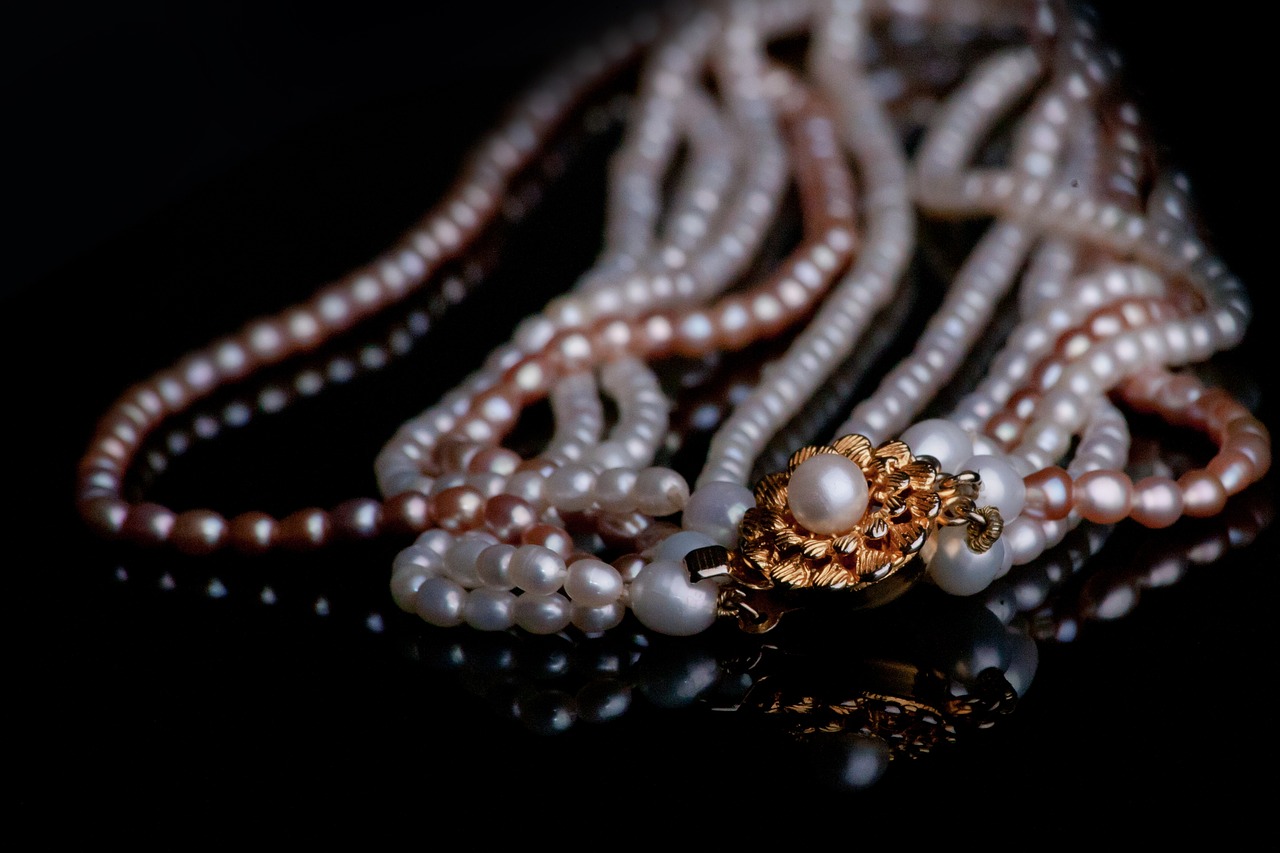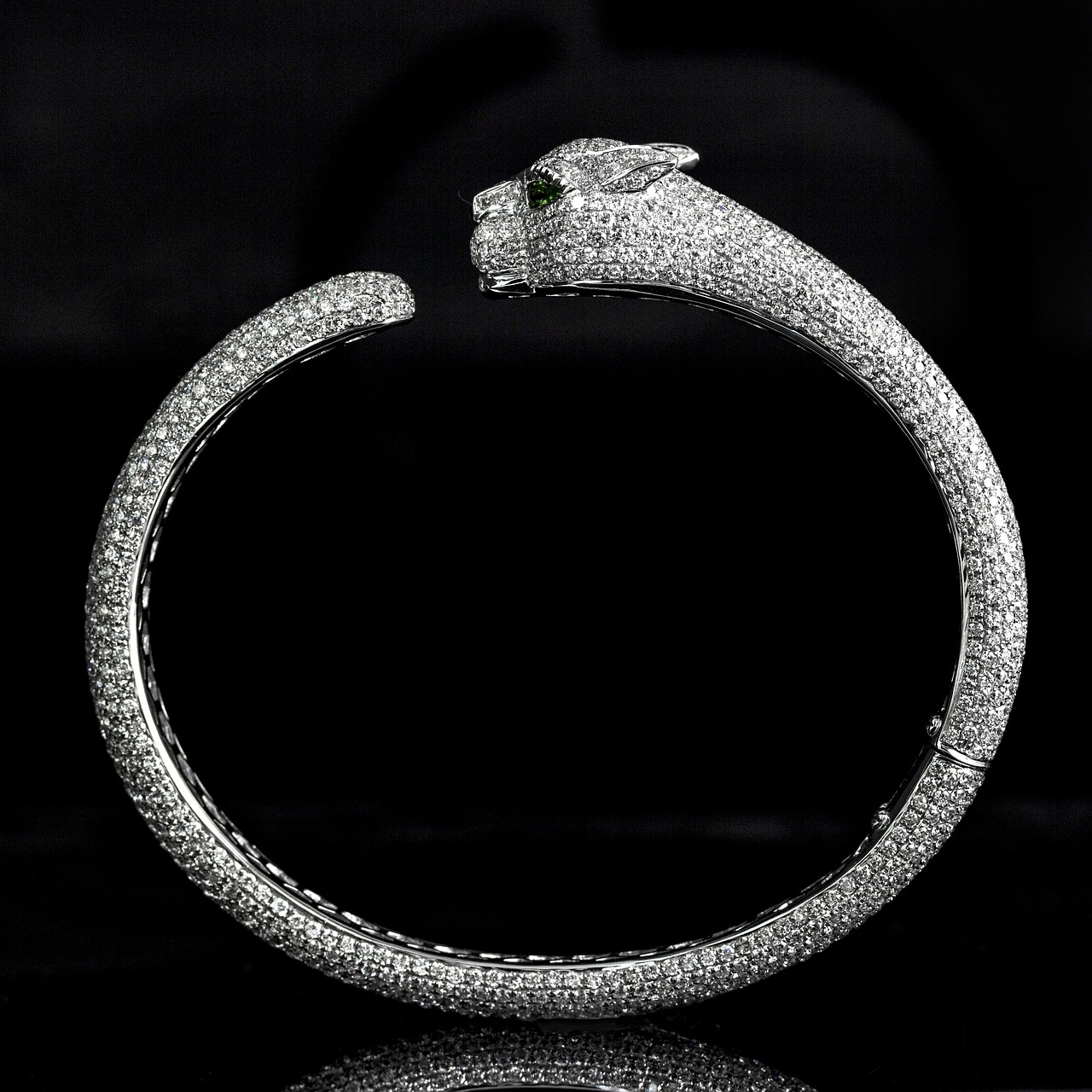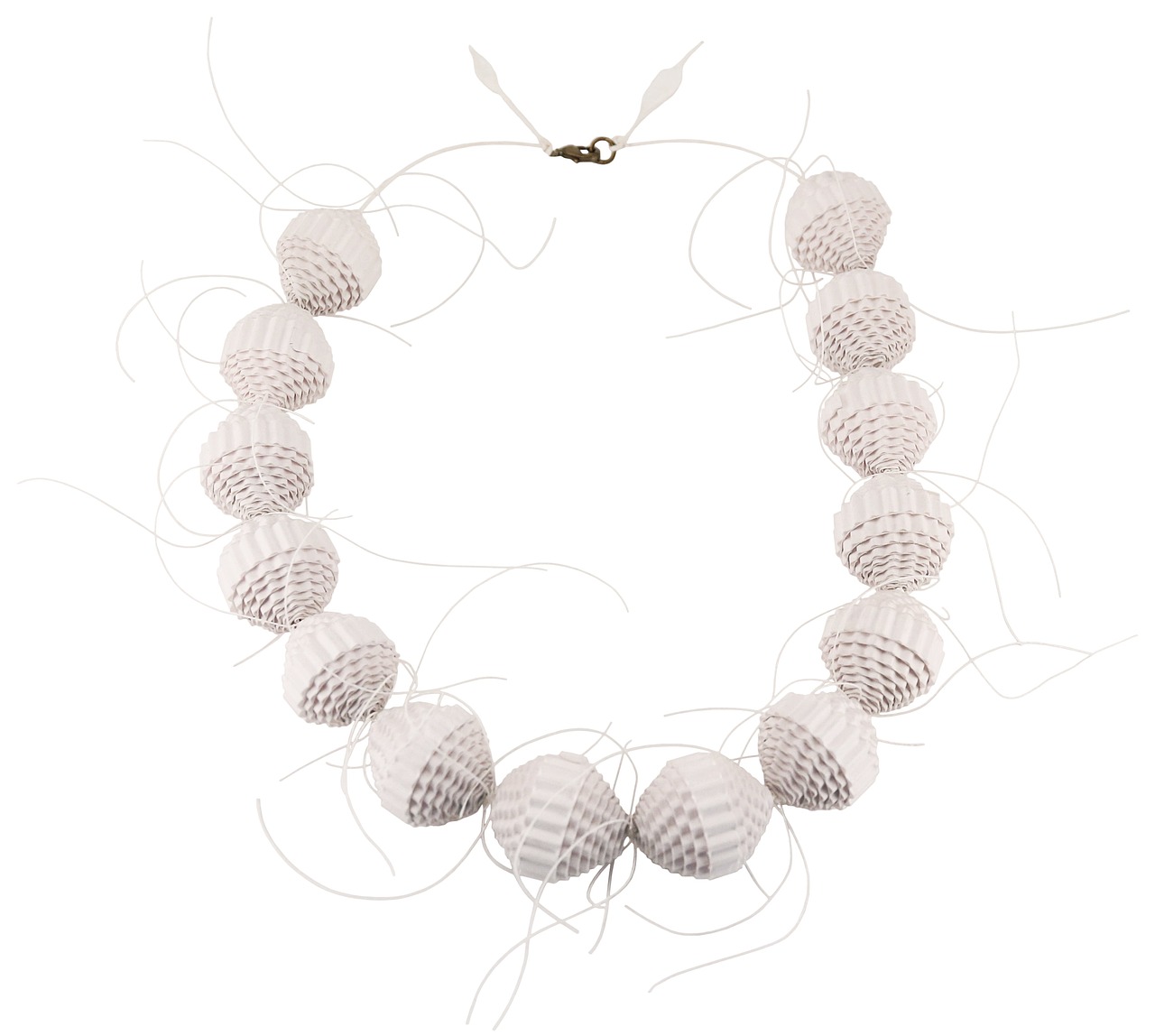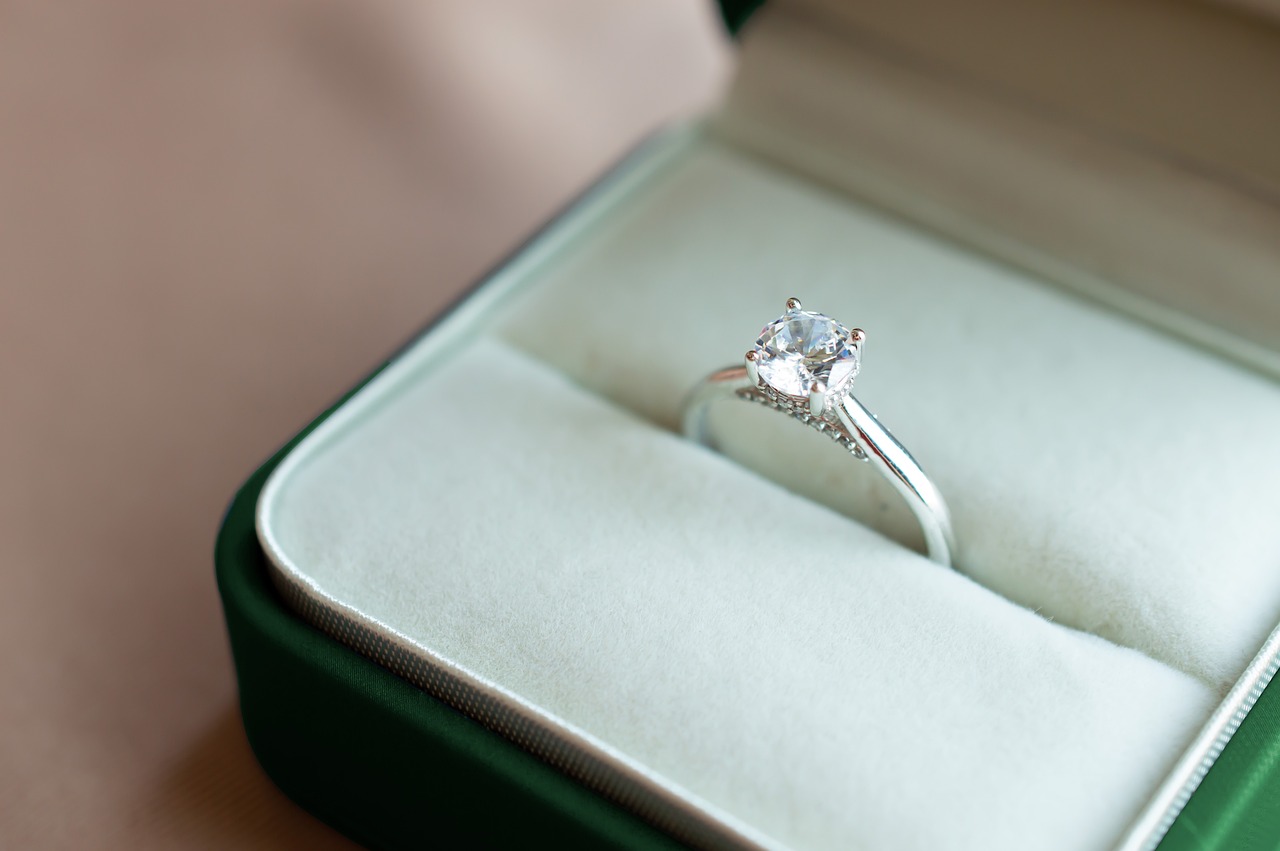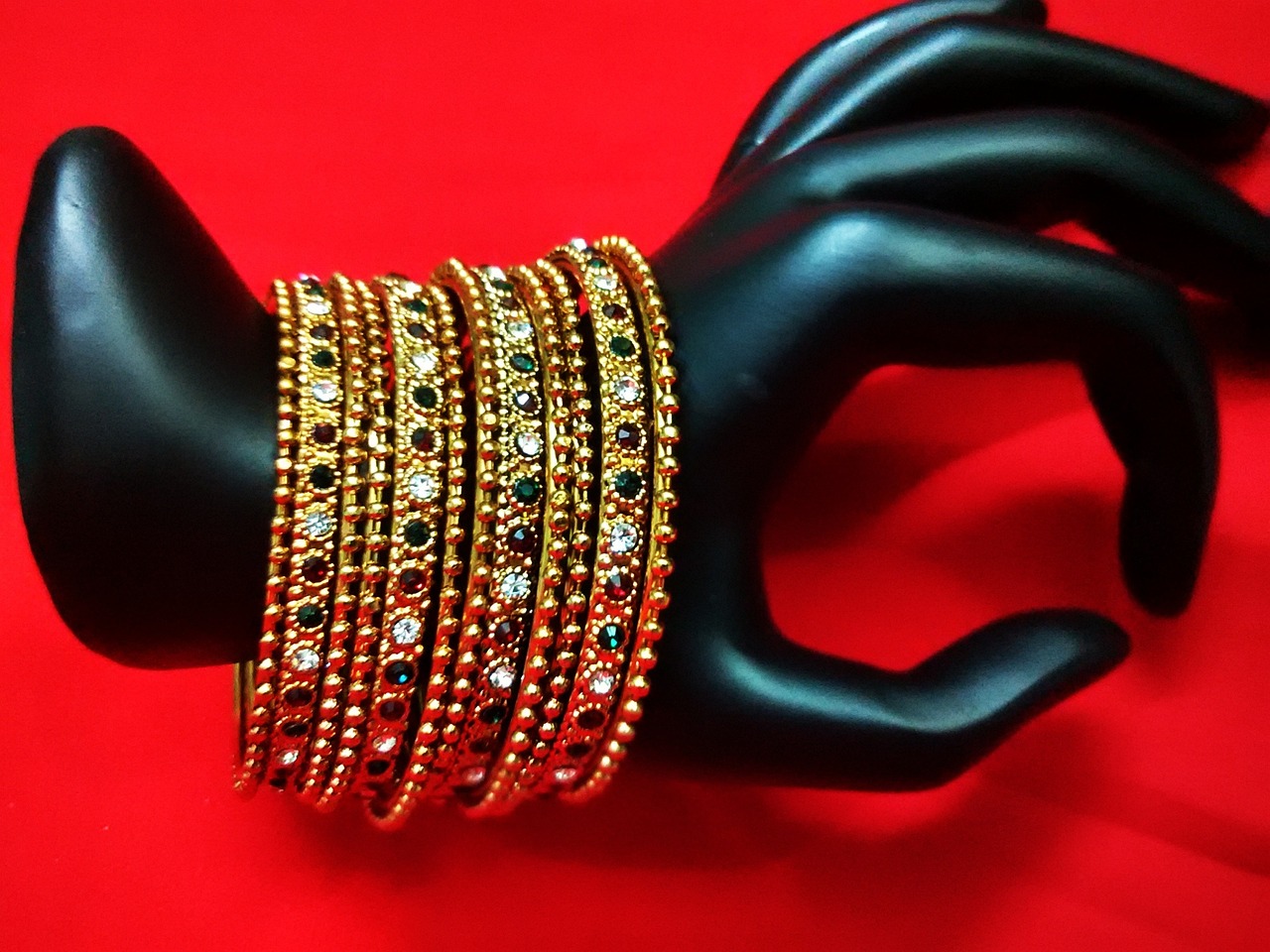Native American jewelry is a vibrant expression of culture, history, and artistry, deeply intertwined with the identity of the tribes that create it. This article delves into the rich history, intricate artistry, and cultural significance of Native American jewelry, showcasing its unique styles, materials, and the profound stories that each piece conveys.
Native American jewelry stands out due to its exceptional craftsmanship, diverse materials, and cultural motifs. Each piece reflects the heritage and traditions of different tribes across North America, embodying their unique stories and beliefs. The use of symbols and materials often carries significant meanings, connecting the wearer to their ancestry.
The creation of Native American jewelry is a meticulous process that involves traditional techniques passed down through generations. These techniques include:
- Silversmithing: A craft that has evolved significantly since its introduction by European settlers, resulting in a distinctive art form that blends old and new.
- Beadwork: This colorful technique often features intricate patterns that symbolize cultural beliefs and personal identity.
- Stone Setting: The incorporation of natural stones, such as turquoise and coral, adds both beauty and spiritual significance to each piece.
Symbols play a crucial role in Native American jewelry, often representing spiritual beliefs, nature, and tribal identity. Each design element holds a deeper meaning, connecting the wearer to their heritage. Some common symbols include:
- Turquoise: Highly valued for its protective qualities, health benefits, and good fortune, turquoise is frequently used in jewelry.
- Animal Motifs: Designs featuring animals such as eagles and bears symbolize strength and wisdom, reflecting the deep connection to nature.
The evolution of Native American jewelry mirrors historical changes and cultural exchanges. Modern influences have introduced new materials and techniques, allowing artisans to innovate while honoring their cultural roots. This blend of traditional and contemporary styles has made Native American jewelry appealing to a broader audience.
Purchasing authentic Native American jewelry not only supports artisans but also preserves their cultural heritage. To ensure authenticity, consider the following options:
- Trusted Online Retailers: Many online platforms specialize in Native American jewelry, providing detailed information about the artisans and the cultural significance of each piece.
- Local Art Shows and Markets: Attending these events allows you to meet artisans directly, learn about their craft, and purchase unique, one-of-a-kind pieces.
In conclusion, Native American jewelry is more than just adornment; it is a reflection of cultural identity, history, and artistry that speaks to the heart of its creators. By understanding its significance and supporting authentic artisans, we can help preserve this rich cultural heritage for future generations.
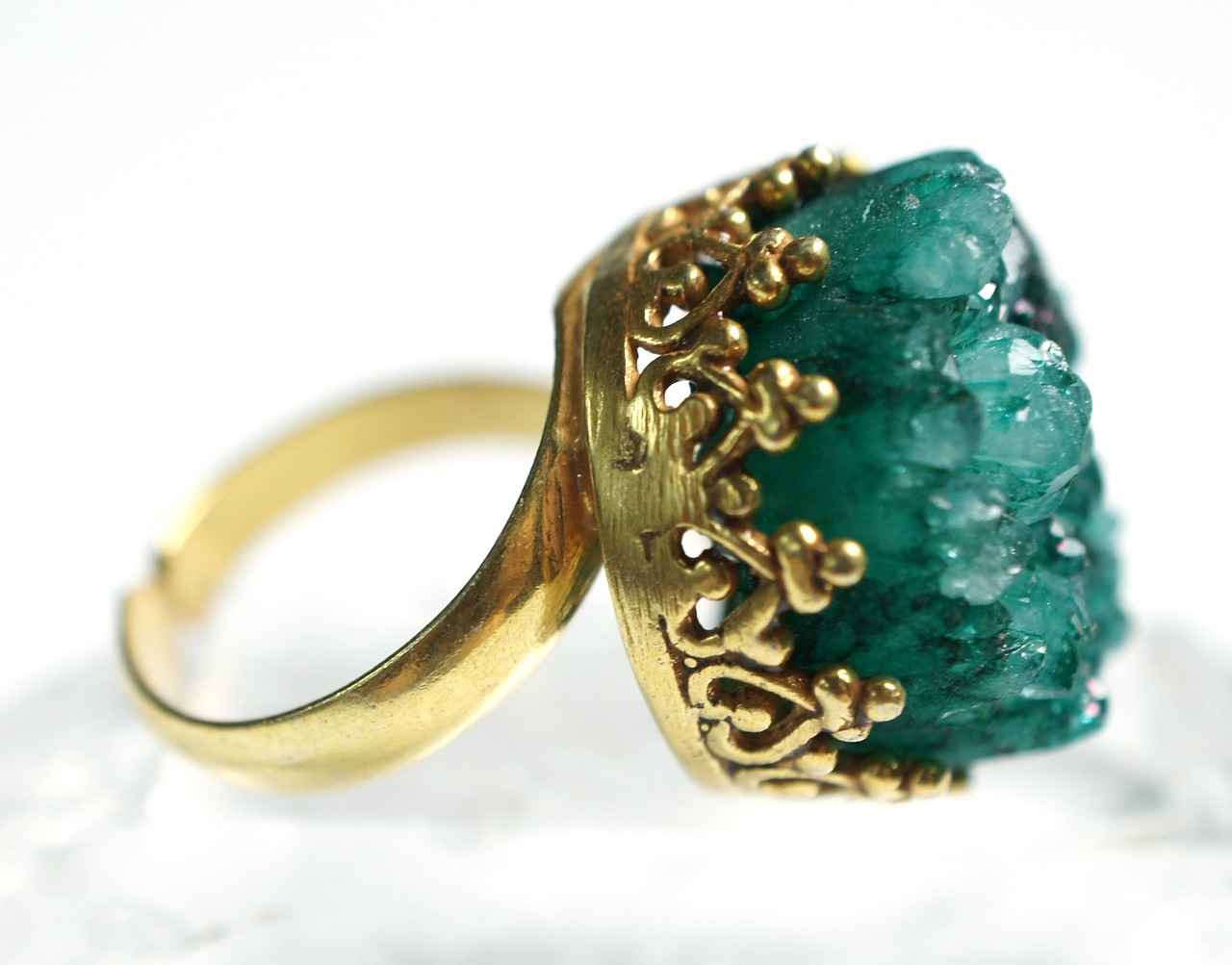
What Makes Native American Jewelry Unique?
Native American jewelry is not just an adornment; it is a reflection of cultural identity, history, and artistry. Each piece tells a story, capturing the essence of the tribes that create it. This article delves into the distinctive features that make Native American jewelry unique, exploring its craftsmanship, materials, and the rich cultural motifs that are integral to its design.
One of the most striking aspects of Native American jewelry is its unique craftsmanship. Artisans employ techniques that have been passed down through generations, often incorporating traditional methods such as silversmithing, beadwork, and stone setting. Each technique not only showcases the artisan’s skill but also embeds cultural significance into every piece.
- Silversmithing: This art form has evolved significantly since its introduction by European settlers. Native American silversmiths blend traditional methods with contemporary designs, resulting in pieces that are both timeless and modern.
- Beadwork: Vibrant beads, often made from materials like glass or natural stones, are meticulously stitched into intricate patterns. These designs frequently carry personal or spiritual meanings, making each item a unique expression of the wearer’s identity.
- Stone Setting: Stones such as turquoise, coral, and onyx are commonly used. Each stone is chosen not only for its beauty but also for its cultural significance, often believed to carry protective or healing properties.
Furthermore, the materials used in Native American jewelry are deeply connected to nature and tribal beliefs. For instance, turquoise is revered for its protective qualities, while coral is often associated with life and vitality. The use of these natural materials reflects a profound respect for the environment and the spiritual connections that many tribes maintain with the earth.
Cultural motifs play a vital role in the design of Native American jewelry. Each symbol and pattern holds a deeper meaning that connects the piece to the tribe’s history and beliefs. Common motifs include:
- Animal Symbols: Designs featuring animals such as eagles, bears, and wolves symbolize strength, wisdom, and a deep connection to nature.
- Geometric Patterns: These often represent the natural world and the cosmos, reflecting the tribe’s understanding of their place within it.
- Spiritual Symbols: Many pieces incorporate symbols that represent spiritual beliefs, such as the spider web, symbolizing creativity and the interconnectedness of life.
This rich tapestry of motifs not only enhances the visual appeal of the jewelry but also serves as a storytelling medium, allowing wearers to express their cultural identity and personal beliefs.
The evolution of Native American jewelry is a testament to the resilience and adaptability of tribal artisans. While traditional techniques remain at the core, modern influences have introduced new materials and styles. This blending of old and new allows artisans to innovate while staying true to their cultural roots.
Moreover, the rise of the internet and social media has opened new avenues for artisans to showcase their work to a global audience. This exposure has not only helped preserve traditional practices but also encouraged a new generation of artists to explore their heritage and create contemporary pieces that resonate with both tradition and modern aesthetics.
In conclusion, Native American jewelry is a unique art form that encapsulates the rich heritage, cultural significance, and craftsmanship of various tribes. By understanding the elements that make these pieces special, one can appreciate the stories and traditions woven into each item, ensuring that the legacy of Native American artistry continues to thrive.

How Is Native American Jewelry Made?
Native American jewelry is a vivid reflection of the culture, history, and artistry of indigenous peoples across North America. The intricate process of creating this jewelry is steeped in traditions that have been meticulously passed down through generations. Each piece tells a unique story, embodying the spiritual beliefs, values, and experiences of the artisans who craft them. This article delves into the various methods and materials used in the making of Native American jewelry, highlighting the importance of these techniques in preserving cultural heritage.
The creation of Native American jewelry involves a variety of traditional techniques that reflect the deep cultural significance and artistic expression of different tribes. Among the most prominent methods are silversmithing, beadwork, and stone setting. Each technique is not only a craft but also a means of storytelling, with specific designs and materials holding particular meanings.
Silversmithing emerged in the Native American community following European contact, evolving into a unique art form that combines traditional craftsmanship with contemporary influences. This technique involves shaping silver into intricate designs, often featuring symbols that represent tribal identity and beliefs. Artisans utilize techniques such as overlay and stamping to create depth and texture, resulting in stunning pieces that reflect both personal and cultural narratives.
Beadwork is another essential aspect of Native American jewelry, characterized by its vibrant colors and intricate patterns. This technique often involves the use of glass, stone, or shell beads, meticulously sewn together to create beautiful designs. Each pattern may symbolize different aspects of life, such as spirituality, nature, or community. The use of color is particularly significant, with specific hues representing various meanings, making beadwork a powerful form of personal expression.
Natural stones such as turquoise, coral, and lapis lazuli are often incorporated into Native American jewelry. The process of stone setting requires skill and precision, as artisans must ensure that each stone is securely placed while enhancing the overall aesthetic of the piece. Each stone carries its own significance; for instance, turquoise is revered for its protective qualities, while coral is associated with health and prosperity. The thoughtful inclusion of these materials showcases the artisans’ connection to the earth and their cultural heritage.
Traditional techniques such as inlay and overlay are crucial in maintaining the authenticity of Native American jewelry. These methods not only highlight the skill of the artisan but also serve as a means of preserving cultural identity. By passing down these techniques through generations, Native American communities ensure that their rich history and traditions continue to thrive.
While traditional methods remain at the core of Native American jewelry making, modern innovations have also emerged. Contemporary artisans often blend traditional techniques with new materials and designs, creating pieces that resonate with both their cultural roots and modern aesthetics. This fusion allows for a broader audience appreciation while still honoring the traditions that define Native American craftsmanship.
In conclusion, the creation of Native American jewelry is a multifaceted process that combines traditional techniques with cultural significance. Through silversmithing, beadwork, and stone setting, artisans express their heritage and identity, ensuring that these beautiful pieces continue to tell their stories for generations to come.
Traditional Techniques in Jewelry Crafting
Native American jewelry is not just a form of adornment; it is a vibrant expression of cultural identity, history, and artistry. Among the various techniques that define this craftsmanship, traditional methods such as stamping, overlay, and inlay hold a significant place. These techniques not only enhance the aesthetic appeal of the jewelry but also serve as a testament to the skill and cultural heritage of the artisans.
The importance of traditional techniques in Native American jewelry lies in their ability to preserve the cultural narratives and artistic expressions of various tribes. Each technique tells a story, allowing artisans to convey their heritage through their work.
Stamping is a technique where metal is impressed with designs using various tools. This method allows for intricate patterns to be created on the surface of the metal, often symbolizing tribal stories or natural elements. The process requires a steady hand and an eye for detail, showcasing the artisan’s dedication to their craft.
The overlay technique involves layering different pieces of metal to create a design that has depth and texture. This method allows artisans to combine contrasting colors and finishes, adding a unique dimension to each piece. The intricate layering often reflects the natural beauty of the landscape, embodying the connection between the jewelry and the earth.
Inlay is another traditional technique where stones or other materials are set into the surface of the jewelry. This method not only enhances the visual appeal but also incorporates natural elements that hold cultural significance. For example, turquoise, coral, and other stones are often used to symbolize various aspects of life, such as protection, health, and prosperity.
Each technique—stamping, overlay, and inlay—serves as a bridge between the past and present. They are not merely decorative; they embody the stories, beliefs, and traditions of the tribes. By using these methods, artisans honor their ancestors and keep their cultural narratives alive.
While traditional techniques remain at the heart of Native American jewelry, many artisans are now blending these methods with modern styles and materials. This adaptation allows them to reach a broader audience while still maintaining their cultural roots. The innovation seen in contemporary pieces showcases the resilience and creativity of Native American artists.
When purchasing Native American jewelry, it is essential to seek out authentic pieces that reflect the true artistry and cultural significance behind them. Buying directly from artisans or trusted retailers ensures that these traditional techniques are preserved and appreciated. This not only supports the artists but also helps in the continuation of their cultural heritage.
In conclusion, traditional techniques such as stamping, overlay, and inlay are vital components of Native American jewelry. They reflect the skill, creativity, and cultural narratives of the artisans, making each piece a unique representation of their heritage. By understanding and appreciating these techniques, we can honor the artistry and stories woven into every piece of jewelry.
Silversmithing: A Craft with History
Silversmithing holds a significant place in the rich tapestry of Native American artistry, representing a fusion of cultural heritage and innovative craftsmanship. Introduced by European settlers, this technique has been adapted and transformed by Native American artisans into a unique art form that reflects their identity and traditions.
The introduction of silversmithing to Native American communities occurred in the late 19th century, primarily through trade interactions with European settlers. Initially, Native American artisans were exposed to silver as a new medium, which they began to incorporate into their traditional jewelry-making practices. Over time, this led to a distinctive style that combined European techniques with Native American motifs and symbolism, creating a beautiful blend of cultures.
Native American silversmiths employ a variety of traditional techniques that have been passed down through generations. Some of the most notable methods include:
- Overlay: This technique involves layering thin sheets of silver to create intricate designs that stand out against a contrasting background.
- Stamping: Artisans use metal stamps to impress patterns and symbols into the silver, adding texture and depth to their work.
- Inlay: This method incorporates other materials, such as turquoise, coral, or lapis lazuli, into the silver, resulting in stunning color contrasts and intricate designs.
Silversmithing is not just a craft; it is a vital expression of cultural identity among Native American communities. Each piece of jewelry tells a story, often reflecting the artisan’s personal experiences, tribal affiliation, and spiritual beliefs. The use of traditional symbols and patterns connects the wearer to their ancestral roots and cultural narratives.
As Native American artisans have embraced modern influences, silversmithing has evolved while retaining its traditional essence. Contemporary artists often experiment with new designs, materials, and techniques, appealing to a broader audience while honoring their cultural legacy. This evolution allows for greater creativity and innovation, ensuring that the art form remains vibrant and relevant in today’s world.
While silver is the primary material in this craft, artisans often incorporate a variety of other natural materials to enhance their pieces:
- Turquoise: Highly valued for its beauty and cultural significance, turquoise is frequently used in Native American jewelry, symbolizing protection and healing.
- Coral: This vibrant stone adds color and depth to jewelry, often representing life and vitality.
- Gold and Copper: Some artisans experiment with these metals, creating unique contrasts and styles that appeal to modern tastes.
Purchasing authentic Native American silver jewelry supports artisans and their communities. It’s essential to seek out reputable sources to ensure you are buying genuine pieces:
- Artisan Markets: Visiting local markets or art shows provides an opportunity to meet the artisans, learn about their craft, and purchase one-of-a-kind pieces.
- Specialized Online Retailers: Many online platforms focus on Native American jewelry, offering detailed information about the artisans and the cultural significance of each piece.
In summary, silversmithing is a profound aspect of Native American culture, embodying a rich history and a vibrant future. Through the blending of traditional techniques and contemporary styles, Native American artisans continue to create stunning pieces that resonate with both their cultural heritage and modern aesthetics.
Beadwork: A Colorful Expression
Beadwork is an ancient craft that holds a significant place in the world of Native American jewelry. This technique is not merely about decoration; it is a vibrant expression of identity and culture. Each bead strung together tells a story, often intertwined with the history and traditions of the tribes that create them.
The art of beadwork involves the meticulous placement of beads to form intricate patterns and designs. These patterns often incorporate cultural symbols that reflect the beliefs, values, and experiences of the artisans. The use of color is particularly important, as different hues can symbolize various meanings. For instance, red might represent strength, while blue may signify peace. This rich tapestry of colors and patterns transforms simple beads into powerful narratives.
Native American beadwork traditionally utilizes materials such as glass, bone, and shell. The introduction of glass beads in the 19th century revolutionized the craft, allowing artisans to experiment with a wider range of colors and styles. Natural materials like seeds and stones are also common, each chosen for their unique qualities and significance.
The process of creating beadwork is labor-intensive and requires a high level of skill. Artisans often begin by sketching their designs, which can range from simple geometric shapes to complex scenes depicting nature or tribal stories. After the design is finalized, the artisan threads the beads onto a base material, which can be fabric, leather, or even rawhide. This meticulous process can take days or even weeks, depending on the intricacy of the design.
Each beadwork piece is a personal expression and often serves as a visual narrative. For many Native American tribes, beadwork patterns are steeped in spiritual significance. They can depict important events, ancestral stories, or even represent the wearer’s personal journey. For example, a necklace adorned with a specific pattern may signify a rite of passage or a connection to a particular clan.
Beadwork is a vital aspect of cultural identity for Native American communities. It serves not only as a form of artistic expression but also as a means of preserving and transmitting cultural knowledge. The techniques and designs are often passed down through generations, ensuring that the stories and traditions remain alive. This practice reinforces community bonds and fosters a sense of belonging among members.
In recent years, contemporary Native American artists have begun to incorporate beadwork into modern fashion and art, blending traditional techniques with innovative designs. This evolution allows for a broader audience to appreciate and engage with Native American culture. Many artisans are now using beadwork to address contemporary issues, creating pieces that resonate with both traditional and modern themes.
Authentic beadwork can be found in various places, including Native American art galleries, online marketplaces, and local craft fairs. When purchasing beadwork, it is essential to seek out reputable sources that honor the artisans and their cultural heritage. By supporting these artists, buyers contribute to the preservation of this beautiful craft and its cultural significance.
In conclusion, beadwork is more than just a decorative element in Native American jewelry; it is a rich, cultural expression that encapsulates history, identity, and artistry. Each piece is a testament to the skill and creativity of the artisan, and a vital link to the past and future of Native American culture.
The Role of Natural Materials
Native American jewelry is not only a beautiful form of art but also a significant expression of cultural identity. One of the most fascinating aspects of this jewelry is the use of natural materials, which are deeply intertwined with the spiritual beliefs and traditions of various tribes. Among these materials, turquoise, coral, and silver stand out, each carrying its own rich symbolism and significance.
The use of natural materials in Native American jewelry is a reflection of the tribes’ deep connection to nature. Each material is chosen not only for its beauty but also for its cultural significance. For instance, turquoise is often seen as a symbol of protection, health, and good fortune. This stone is believed to connect the wearer to the earth and the sky, embodying the harmony of nature.
Coral, another popular material, is often associated with the ocean and its life-giving properties. In many Native American cultures, coral represents the blood of the earth, signifying vitality and strength. Its vibrant red color is thought to ward off negative energies and promote emotional well-being, making it a favored choice in jewelry.
Silver has a unique history within Native American craftsmanship. Initially introduced by European settlers, it has since been transformed into a medium that reflects indigenous artistry. Silver symbolizes purity and clarity, often used to enhance the beauty of stones like turquoise and coral. The reflective nature of silver is also thought to represent the spiritual light that guides individuals on their life paths.
The integration of these natural materials into jewelry involves traditional techniques that have been passed down through generations. Artisans employ methods such as silversmithing, beadwork, and stone setting to create intricate designs that tell stories and convey cultural beliefs. Each piece is a unique representation of the artisan’s skill and the cultural narratives of their tribe.
Natural materials in Native American jewelry serve as a bridge between the past and present, helping to preserve cultural identity. By using these materials, artisans honor their ancestors and maintain a connection to their heritage. Each piece of jewelry is not merely an accessory; it is a story—a testament to the tribe’s history, beliefs, and values.
When seeking authentic Native American jewelry, it is crucial to choose pieces that are made using traditional materials and methods. Many local artisans sell their creations at art shows and markets, providing an opportunity to purchase unique items that embody their cultural significance. Additionally, trusted online retailers often offer detailed information about the artisans and the stories behind each piece, ensuring authenticity.
In conclusion, the role of natural materials in Native American jewelry is profound, encompassing not only aesthetic appeal but also deep cultural meanings. By understanding the significance of materials like turquoise, coral, and silver, one can appreciate the artistry and heritage that each piece represents. Whether worn for protection, as a symbol of identity, or simply for beauty, these materials connect the wearer to a rich cultural legacy.
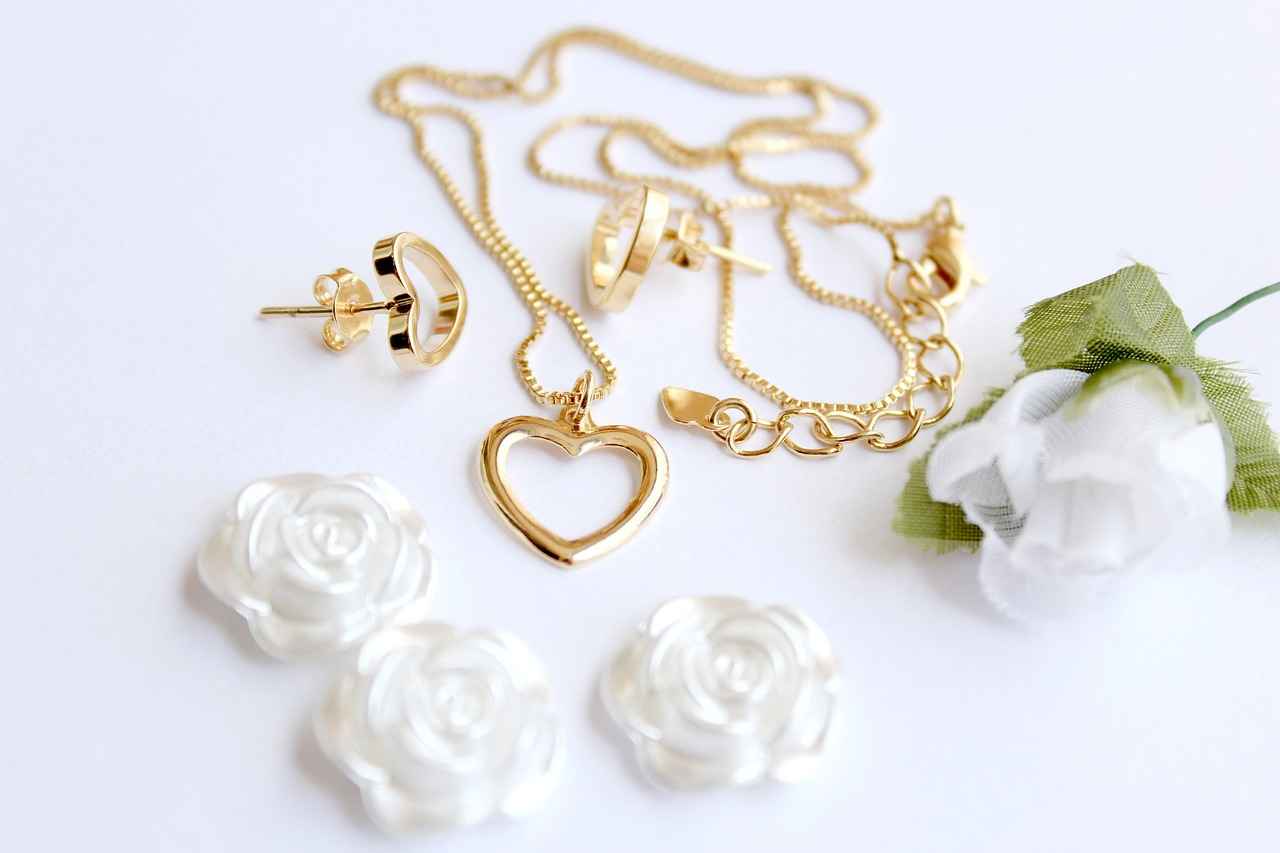
What Symbols Are Common in Native American Jewelry?
Symbols in Native American jewelry serve as a profound connection to the spiritual beliefs, cultural narratives, and natural world that shape the identities of various tribes. Each symbol is meticulously crafted, embodying stories and traditions that transcend generations. This article delves into the significance of these symbols, exploring their meanings and the artistry behind them.
Native American jewelry is rich with symbolism, where each design element holds a unique story. These symbols often reflect the tribe’s beliefs, nature, and personal identity. Here are some of the most common symbols found in Native American jewelry:
- Turquoise: This stone is not just aesthetically pleasing; it is considered sacred and symbolizes protection, health, and good fortune. Many artisans incorporate turquoise into their designs to enhance the spiritual significance of their pieces.
- Animal Motifs: Designs featuring animals like eagles, bears, and wolves are prevalent. Each animal represents different traits, such as strength, wisdom, and a deep connection to nature, reflecting the beliefs and values of the tribe.
- Feathers: Often symbolizing freedom and spiritual growth, feathers are frequently used in jewelry to signify a connection to the divine and the natural world.
- Spirals: Representing life cycles and growth, spirals are common in various forms of art, including jewelry. They reflect the journey of life and the interconnectedness of all beings.
- Sun and Moon: These celestial symbols embody the balance of light and darkness, often representing harmony in life. They are integral to many tribal narratives and are depicted in various artistic forms.
Each of these symbols is not merely decorative; they are imbued with meaning and reflect the wearer’s identity and beliefs. The intricate designs often tell a story or convey a message that resonates deeply with the wearer and their community.
The use of symbols in jewelry is a powerful way for individuals to express their cultural identity. By wearing these pieces, individuals not only showcase their heritage but also participate in the preservation of their tribe’s traditions. The act of wearing jewelry with specific symbols can serve as a reminder of one’s roots and a connection to ancestors.
Moreover, these symbols often serve educational purposes, allowing artisans to share their culture with a broader audience. When someone wears a piece of Native American jewelry, they carry a part of that culture with them, fostering understanding and appreciation of the rich traditions behind the art.
While many symbols are common across various tribes, their interpretations can differ significantly. For instance, the eagle may symbolize freedom in one tribe, while in another, it represents spiritual guidance. This diversity highlights the uniqueness of each tribe’s cultural narrative and the importance of context in understanding the symbols.
Artisans often draw inspiration from their surroundings, personal experiences, and historical events, leading to variations in symbolism. This rich tapestry of meanings adds depth to the jewelry, making each piece a unique expression of the artist’s perspective and cultural background.
In conclusion, the symbols found in Native American jewelry are more than mere decorations; they are powerful representations of spiritual beliefs, cultural narratives, and personal identities. By understanding these symbols, we can gain a deeper appreciation for the artistry and heritage they embody, connecting us to the rich history of Native American cultures.
The Meaning of Turquoise
Turquoise holds a profound significance in Native American culture, revered not only for its stunning appearance but also for its deep spiritual meaning. This beautiful stone, often characterized by its vibrant blue and green hues, represents a connection to the earth and the sky, embodying the balance between these two essential elements of life.
In many Native American tribes, turquoise is considered a powerful protective stone. It is believed to guard against negative energies and misfortune, serving as a talisman for those who wear it. Additionally, turquoise is often associated with health and healing, thought to promote physical well-being and emotional stability. This belief is deeply rooted in the spiritual practices of various tribes, where the stone is used in rituals and ceremonies.
Turquoise is frequently incorporated into jewelry, enhancing its spiritual significance. Artisans create stunning pieces that not only showcase the beauty of the stone but also convey the stories and traditions of their respective tribes. The use of turquoise in jewelry serves as a symbol of identity, linking the wearer to their cultural heritage. For example, it can be found in necklaces, bracelets, and earrings, often combined with silver and other natural materials to create striking designs.
Many Native American cultures regard turquoise as a gift from the spirits, believed to bring good fortune to those who possess it. This belief is reflected in the gifting of turquoise jewelry during significant life events, such as weddings or births, symbolizing blessings and prosperity. The stone is often embedded with personal stories and meanings, making each piece unique and significant to the wearer.
- Natural Turquoise: This form of turquoise is mined and used without any enhancements, retaining its authentic qualities.
- Stabilized Turquoise: This type has undergone a process to improve its durability and color, making it suitable for various jewelry applications.
- Reconstituted Turquoise: Made from ground turquoise mixed with resin, this option allows for a wider range of colors and patterns.
The color of turquoise is reminiscent of the sky and water, elements that are vital to life. This connection to nature is a key reason why the stone is so deeply revered. Many tribes believe that wearing turquoise helps to maintain a spiritual balance, fostering a sense of harmony with the environment. This belief is often reflected in the designs of the jewelry, which may incorporate natural motifs and symbols that celebrate the beauty of the earth.
Turquoise has a rich cultural legacy that transcends generations. As artisans continue to create jewelry that honors traditional techniques, the significance of turquoise remains strong. It serves as a reminder of the resilience and creativity of Native American cultures, preserving their stories and values in each piece crafted. The ongoing appreciation for turquoise in contemporary jewelry further solidifies its status as a cherished symbol of heritage and identity.
In summary, turquoise is not merely a decorative stone; it is a profound symbol of protection, health, and good fortune within Native American culture. Its incorporation into jewelry enhances its spiritual significance, making it a vital element of cultural expression and identity.
Animal Motifs and Their Significance
Animal motifs hold a significant place in the world of Native American jewelry, serving as powerful symbols that connect wearers to their cultural heritage and the natural world. These motifs are not merely decorative; they embody deep meanings and reflect the beliefs and values of various tribes across North America.
In Native American culture, animals are often seen as spiritual guides and representations of various traits. For example:
- Eagles symbolize strength, courage, and a connection to the divine, often being viewed as messengers between humans and the Creator.
- Bears are associated with introspection, healing, and bravery, representing the power of the earth and the importance of nurturing.
- Wolves embody loyalty, family ties, and teamwork, highlighting the significance of community and social bonds.
Artisans utilize various techniques to incorporate animal motifs into their jewelry, ensuring that each piece tells a story. Common methods include:
- Engraving – This technique allows for intricate designs that bring the animal’s essence to life.
- Inlay – Combining different materials, such as stones and metals, creates vibrant representations of animals.
- Stamping – This traditional method adds texture and depth, enhancing the visual impact of the motifs.
For many Native American tribes, wearing jewelry adorned with animal motifs is a way to express cultural identity and personal beliefs. These symbols serve not only as personal adornments but also as reminders of the wearer’s connection to their ancestors and the natural world. They reflect a profound respect for nature and the interdependence of all living beings.
As Native American jewelry evolves, contemporary artisans are reimagining traditional animal motifs. This evolution allows for the incorporation of modern aesthetics while maintaining cultural significance. Many artists blend traditional designs with new materials, creating pieces that appeal to a broader audience without losing their cultural essence.
When searching for authentic Native American jewelry, especially those with animal motifs, consider the following:
- Artisan Background – Research the artist’s background and their tribal affiliation to ensure authenticity.
- Materials Used – Genuine pieces often feature traditional materials like turquoise, silver, and coral.
- Craftsmanship – Authentic jewelry will exhibit high-quality craftsmanship, with attention to detail in the representation of animal motifs.
In conclusion, animal motifs in Native American jewelry are rich in meaning and cultural significance. They serve as a bridge between the past and present, allowing artisans to express their heritage while engaging with modern audiences. By understanding the importance of these symbols, wearers can appreciate the stories and traditions embedded in each piece.

How Has Native American Jewelry Evolved Over Time?
The evolution of Native American jewelry is a fascinating journey that mirrors the historical changes, cultural exchanges, and modern influences experienced by Indigenous communities. As artisans navigate the balance between preserving traditional techniques and embracing contemporary trends, they create unique pieces that resonate with a broader audience.
Historically, Native American jewelry has roots that stretch back thousands of years, with each tribe developing its own distinctive styles and materials. Early jewelry was often made from natural elements such as shells, stones, and animal bones, which held significant cultural meanings. As contact with European settlers increased, new materials like silver and glass beads were introduced, leading to a transformation in design and craftsmanship.
Today, artisans are skillfully blending traditional styles with modern aesthetics to create pieces that appeal to contemporary tastes. This fusion not only preserves cultural heritage but also allows for innovation. For example, traditional techniques such as silversmithing and beadwork are still utilized, but they may incorporate modern designs or materials, resulting in jewelry that is both timeless and trendy.
Cultural exchanges have played a significant role in the evolution of Native American jewelry. Interaction with various cultures has introduced new techniques and styles. For instance, the use of vibrant colors and intricate patterns in beadwork can be traced back to influences from other Indigenous groups as well as European art movements. This cross-cultural dialogue enriches the jewelry-making process, allowing artisans to express their identities in diverse ways.
In recent years, modern influences have further shaped the landscape of Native American jewelry. Artisans are now incorporating contemporary materials such as resin and synthetic stones, which expand creative possibilities. Additionally, the rise of social media has allowed artists to showcase their work globally, reaching audiences who appreciate the blend of cultural significance and modern design.
Despite the changes, many artisans remain committed to preserving traditional techniques. Workshops and community programs are being established to educate younger generations about the importance of these skills. This commitment to cultural preservation ensures that the stories and meanings behind each piece of jewelry are passed down, maintaining a strong connection to their heritage.
While the evolution of Native American jewelry is marked by innovation, artisans face challenges such as cultural appropriation and the commercialization of their art. It is crucial for consumers to understand the significance of authenticity and support artisans who honor their traditions. Purchasing from reputable sources ensures that the cultural narratives embedded in each piece are respected and preserved.
Looking ahead, the future of Native American jewelry appears promising. As artisans continue to explore new materials and styles, they will likely find innovative ways to tell their stories while honoring their cultural roots. The ongoing dialogue between tradition and modernity will enrich the jewelry-making process, creating pieces that resonate with both Indigenous and global audiences.
In conclusion, the evolution of Native American jewelry reflects a dynamic interplay of history, culture, and modern influences. Artisans today are not only preserving their heritage but also adapting to contemporary trends, ensuring that their art remains relevant and meaningful in an ever-changing world.
Influence of Modern Trends
In recent years, the world of Native American jewelry has seen a remarkable transformation influenced by modern trends. While traditional techniques and materials remain at the core of this art form, contemporary artists are embracing innovation to create pieces that appeal to a broader audience. This melding of old and new not only preserves cultural heritage but also enhances the aesthetic value of the jewelry.
Modern trends have introduced a variety of new materials, such as synthetic stones and alternative metals, which allow artisans to experiment creatively. These materials can be more affordable and accessible, enabling artists to produce intricate designs without compromising on quality. For instance, the use of resin inlay techniques has become popular, allowing for vibrant colors and complex patterns that were previously difficult to achieve.
Alongside new materials, innovative techniques have emerged, blending traditional craftsmanship with modern design principles. Techniques such as 3D printing and laser cutting are being utilized to create unique shapes and intricate details that enhance the visual appeal of the jewelry. These methods not only streamline the production process but also allow for greater precision, resulting in pieces that are both striking and meaningful.
Despite the incorporation of modern elements, many Native American artists remain committed to honoring their cultural roots. This is achieved by integrating traditional symbols and motifs into contemporary designs. For example, artists might use traditional designs in combination with modern materials to create a piece that tells a story of cultural significance while appealing to contemporary aesthetics.
Cultural authenticity is paramount in the world of Native American jewelry. As artists innovate, they strive to maintain the essence of their heritage. Many artisans are keenly aware of the importance of educating their audience about the stories and meanings behind their work. This not only enriches the buyer’s experience but also fosters a deeper appreciation for the cultural significance of the pieces.
- Wider Audience Appeal: By incorporating modern aesthetics, artists can attract a diverse range of customers who may not have previously engaged with traditional Native American jewelry.
- Increased Accessibility: The use of modern materials can make jewelry more affordable, allowing more people to own and appreciate these unique pieces.
- Preservation of Craftsmanship: As artists innovate, they often share their techniques and knowledge with younger generations, ensuring that traditional craftsmanship continues to thrive.
Many contemporary Native American artists are also focusing on sustainability, using eco-friendly materials and practices. This commitment to the environment resonates with modern consumers who value ethical and sustainable production methods. By prioritizing sustainability, artists not only protect their cultural heritage but also contribute positively to the planet.
In conclusion, the influence of modern trends on Native American jewelry represents a harmonious blend of tradition and innovation. As artists embrace new materials and techniques while honoring their cultural roots, they create pieces that resonate with both contemporary aesthetics and rich heritage. This evolution not only preserves the art form but also ensures its relevance for future generations.
Preservation of Cultural Heritage
is a vital aspect of ensuring that the rich traditions and histories of various communities are not lost to time. In the realm of Native American jewelry, this preservation takes on a unique significance, as artisans strive to maintain traditional techniques and designs that have been passed down through generations.
Traditional techniques in jewelry making are not merely methods of crafting; they are cultural narratives that embody the beliefs, values, and histories of Native American tribes. Each piece of jewelry tells a story, often reflecting the artisan’s personal journey and the collective heritage of their people. By preserving these techniques, artisans ensure that the wisdom and artistry of their ancestors continue to thrive.
Many artisans are committed to educating the younger generations about these invaluable techniques. Workshops and community programs are increasingly popular, allowing experienced artisans to share their knowledge with aspiring jewelry makers. This transfer of skills is crucial, as it not only fosters a sense of pride in cultural identity but also encourages sustainability within the community.
Sustainability is a growing concern in all forms of art, including jewelry making. Many Native American artisans are focusing on sustainable practices by using ethically sourced materials and environmentally friendly methods. This commitment to sustainability not only protects the environment but also honors the cultural significance of the materials used, such as turquoise, which holds deep spiritual meaning within Native American cultures.
Preserving traditional techniques also plays a significant role in economic empowerment for Native American communities. By supporting artisans and purchasing authentic jewelry, consumers contribute to the sustainability of these cultural practices. Local markets and online platforms that feature Native American jewelry help connect artisans with a broader audience, ensuring that their work is valued and appreciated.
Despite the efforts to preserve traditional techniques, artisans face numerous challenges. The influence of mass-produced jewelry and the commercialization of Native American art can dilute the authenticity of traditional designs. It is essential for consumers to educate themselves about the significance of genuine Native American jewelry and to support artisans who prioritize cultural integrity over profit.
- Purchase Authentic Jewelry: Ensure that you buy from reputable sources that support Native American artisans.
- Participate in Workshops: Engage in local workshops to learn about traditional techniques and show support for artisans.
- Spread Awareness: Share knowledge about the importance of preserving cultural heritage through social media and community events.
- Support Artisans Directly: Attend local art shows and markets to meet artisans and understand their craft firsthand.
In conclusion, the efforts to preserve traditional techniques and designs in Native American jewelry are essential for maintaining cultural heritage. Through education, sustainability, and community support, artisans can continue to pass down their knowledge and artistry to future generations. By recognizing the value of these efforts, we can all play a role in ensuring that the rich tapestry of Native American culture remains vibrant and alive.
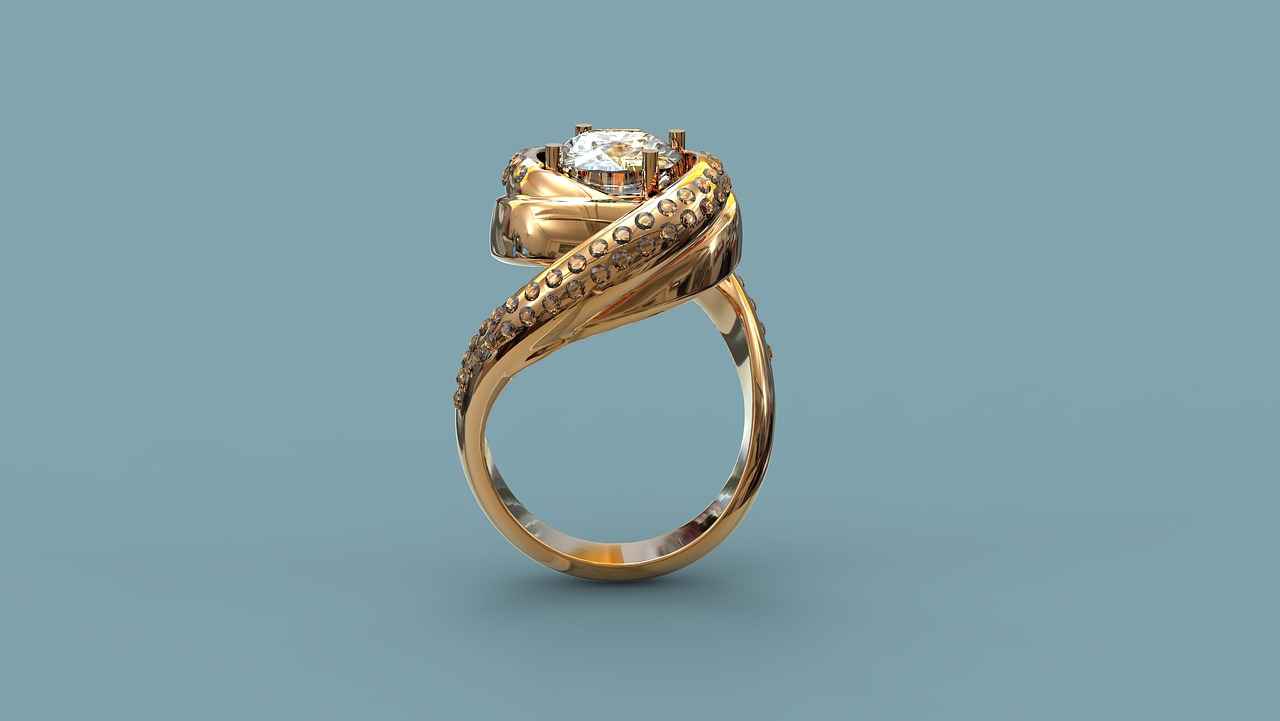
Where to Buy Authentic Native American Jewelry?
When it comes to purchasing authentic Native American jewelry, it is essential to support the artisans and their communities. This not only helps preserve their cultural heritage but also ensures that you are acquiring pieces that embody rich traditions and stories. With various platforms available, buyers can confidently find genuine jewelry that reflects the artistry and significance of Native American craftsmanship.
Purchasing jewelry directly from Native American artisans promotes economic sustainability within their communities. Many artisans rely on their craft as a primary source of income, and by choosing to buy authentic pieces, you are helping to sustain their livelihoods and cultural practices. Additionally, this support fosters a deeper appreciation for their art, allowing for the continuation of traditional techniques and storytelling through jewelry.
There are several platforms where you can find authentic Native American jewelry. Here are some of the most trusted options:
- Online Marketplaces: Websites like Etsy and NativeTech feature a range of artisans who sell their handmade jewelry. These platforms often include detailed descriptions of the artisans and their cultural backgrounds.
- Art Galleries and Museums: Many art galleries and museums have shops that sell authentic Native American jewelry. These venues often curate collections from reputable artisans, ensuring quality and authenticity.
- Local Art Shows and Powwows: Attending local art shows, craft fairs, or powwows provides an excellent opportunity to meet artisans directly. You can learn about their techniques and the stories behind their pieces while purchasing unique items.
To ensure you are buying genuine Native American jewelry, consider the following tips:
- Look for Hallmarks: Many artisans stamp their jewelry with a hallmark or signature. Research the hallmark to verify the artisan’s identity.
- Ask About the Materials: Authentic pieces often use traditional materials such as turquoise, silver, and coral. Inquire about the sourcing of these materials.
- Research the Seller: Check the seller’s reputation, reviews, and background. Authentic artisans often provide information about their cultural heritage and crafting techniques.
Each piece of Native American jewelry carries its own story and cultural significance. The designs often incorporate symbols and motifs that reflect the artisan’s heritage and tribal identity. For example, turquoise is not only a beautiful stone but also symbolizes protection and healing in many Native cultures. By wearing or gifting authentic jewelry, you are sharing in that rich narrative.
Yes, there are risks when purchasing Native American jewelry, particularly if you are not familiar with the market. Counterfeit items can be prevalent, especially in tourist areas. To mitigate these risks, always buy from reputable sources and educate yourself about the characteristics of authentic jewelry.
In summary, purchasing authentic Native American jewelry is a meaningful way to support artisans and their communities. By utilizing trusted platforms and being informed about the authenticity of the pieces, you can enjoy the beauty of these unique creations while contributing to the preservation of their cultural significance.
Trusted Online Retailers
In the digital age, the accessibility of Native American jewelry has significantly increased, allowing enthusiasts and collectors to explore a vast array of authentic pieces from the comfort of their homes. This article delves into the importance of choosing for purchasing Native American jewelry, emphasizing the significance of authenticity and the stories behind each creation.
When shopping for Native American jewelry, it’s crucial to select retailers that prioritize authenticity. Trusted online platforms often provide detailed information about the artisans who create the pieces, showcasing their backgrounds and the cultural significance of their work. This not only enhances the buying experience but also ensures that customers are supporting the artisans and their communities.
- Artisan Information: A reputable retailer will provide background information about the artisans, including their tribal affiliation and the techniques they use.
- Certification of Authenticity: Look for retailers that offer certificates of authenticity, ensuring that the jewelry is genuinely crafted by Native American artisans.
- Customer Reviews: Check reviews and testimonials from previous buyers to gauge the reliability and quality of the retailer’s offerings.
- Return Policy: A trustworthy retailer will have a clear return policy, allowing customers to return items if they do not meet expectations.
Many online retailers specializing in Native American jewelry work directly with artisans, fostering relationships that allow for a deeper understanding of the cultural significance and craftsmanship involved. These retailers often have strict quality control measures in place to ensure that every piece meets high standards before it reaches the consumer. This commitment to quality not only benefits the buyer but also helps preserve the integrity of Native American artistry.
- Convenience: Shopping online allows you to browse a wider selection of jewelry without geographical limitations.
- Access to Unique Pieces: Many online retailers offer one-of-a-kind items that may not be available in local stores.
- Educational Resources: Trusted retailers often provide educational content about the cultural significance of the jewelry, helping buyers make informed decisions.
Several online platforms are dedicated to promoting authentic Native American jewelry. Websites like Indian Market, Native American Jewelry, and Artisan Direct are excellent starting points. These sites not only showcase a wide range of jewelry but also emphasize the importance of supporting Native artisans and preserving their cultural heritage.
Purchasing from trusted online retailers not only provides buyers with authentic jewelry but also supports the livelihoods of Native artisans. By choosing to buy from these sources, customers contribute to the sustainability of traditional crafts and help keep cultural practices alive for future generations.
In conclusion, when seeking authentic Native American jewelry, it is essential to choose trusted online retailers that prioritize quality and authenticity. By doing so, buyers can enjoy unique pieces while supporting the rich cultural heritage of Native American artisans.
Local Art Shows and Markets
Attending local art shows and markets is not just about browsing; it is an immersive experience that allows art enthusiasts to connect with the artisans behind the creations. These events provide a unique platform for artists to showcase their talents, and for visitors to learn about the stories and traditions that inspire each piece. Engaging with the artists directly can deepen your appreciation for their work and the cultural narratives they embody.
Local art shows and markets offer several benefits for both the community and attendees. Here are some compelling reasons to participate:
- Direct Interaction: Meeting artisans in person allows for a more personal connection. You can ask questions about their techniques, inspirations, and the cultural significance of their work.
- Unique Purchases: Unlike mass-produced items, the pieces you find at these events are often one-of-a-kind. This uniqueness adds value and a story behind every purchase.
- Support Local Artists: By buying directly from artisans, you contribute to the local economy and help sustain their craft, ensuring that these traditions continue.
Each local art show or market has its own distinct atmosphere, often reflecting the culture and community it represents. Attendees can expect:
- Diverse Art Forms: From jewelry and pottery to paintings and textiles, local shows often feature a wide range of artistic expressions.
- Workshops and Demonstrations: Many events include live demonstrations, allowing you to see the creative process in action and even participate in workshops.
- Cultural Insights: Artisans often share the history and meaning behind their work, providing valuable insights into their cultural heritage.
To fully enjoy your experience at local art shows and markets, consider the following tips:
- Engage with Artists: Don’t hesitate to ask questions. Most artists are eager to share their stories and the significance of their work.
- Take Notes: If you find a piece that resonates with you, jot down the artist’s name and any interesting details about the work for future reference.
- Explore: Take your time to walk through the entire venue. You may discover hidden gems that you would otherwise miss.
Finding local art shows and markets can be as simple as checking community boards, local newspapers, or online event platforms. Many cities have dedicated websites or social media pages that list upcoming events, making it easier to plan your visit.
In conclusion, attending local art shows and markets not only enriches your understanding of different art forms but also fosters a sense of community. By supporting local artisans, you help preserve cultural traditions and promote the arts. So next time you hear about a local event, consider attending—it might just lead you to your next favorite piece of art.
Frequently Asked Questions
- What materials are commonly used in Native American jewelry?
Native American jewelry often features natural materials such as turquoise, coral, and silver. Each of these materials carries its own cultural significance and symbolism, deeply rooted in the traditions of various tribes.
- How can I ensure that I am buying authentic Native American jewelry?
To purchase authentic pieces, look for reputable online retailers that provide background information on the artisans and their work. Additionally, visiting local art shows and markets allows you to meet the creators directly and learn about the cultural stories behind their jewelry.
- What is the significance of symbols in Native American jewelry?
Symbols in Native American jewelry often reflect spiritual beliefs, nature, and tribal identity. Each design element carries a deeper meaning, connecting the wearer to their heritage and cultural history.
- How has Native American jewelry changed over time?
Native American jewelry has evolved significantly, blending traditional techniques with modern trends. This fusion allows artisans to innovate while preserving their cultural roots, resulting in pieces that appeal to both contemporary tastes and traditional aesthetics.
- What role does beadwork play in Native American jewelry?
Beadwork is a vibrant and essential technique used in Native American jewelry, often featuring intricate patterns and colors. It serves as a personal expression of identity and cultural beliefs, making each piece unique and meaningful.
